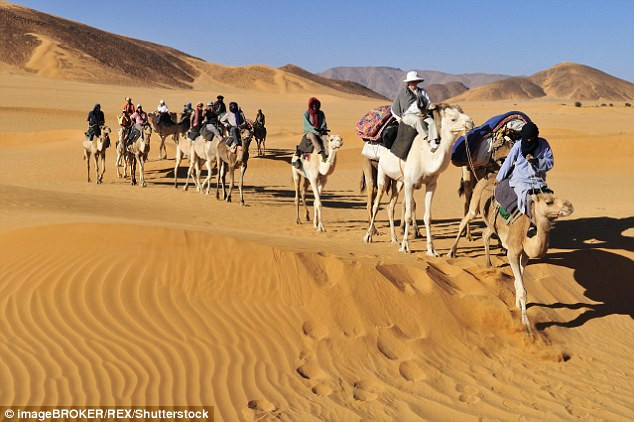Could it be that humans have turned the Sahara into a desert?
Who would have thought this sandy desert a few thousand years ago was a vast meadow. And it is man who contributed to the desertification of Sahara.
Talking about the Sahara - people imagine the bright sunshine, the sand is dry and hot, a little bit of cacti or camel image walks in the sand .
But do you believe it, in the thousands of years ago, it was at the supposedly harsh desert that was a vast, green meadow. And it is human activity that is thought to influence the ecosystem and desert the Sahara .

A few thousand years ago, it was in the desert that was said to be harsh, a vast, green meadow.
An archaeologist said that deep down in the Sahara's sand are traces of old rivers, of plants and animals. And it was the oscillation of the planet orbit 20,000 years ago that affected and ended this fertility in the Sahara, instead of the barren desert region.
However, according to David Wright, a researcher at Seoul National University, this explanation is not very convincing.
He said: "In East Asia there are long-standing Stone Age theories that show that the ancient people could change the landscape so much that the monsoon stopped penetrating the mainland."
According to Wright and his colleagues, bringing cattle to North Africa more than 8,000 years ago by humans has changed the region's flora and prevent the development of trees and large shrubs.
When the sun shines on the ground, it will heat the surface. The vegetation gradually diminishes, making the land more lonely, more exposed to the hot sun.
This change also reduces the impact and accessibility of monsoon in Africa, thereby promoting the development of low shrubs and deserts - creating a loop of desertification.

The vegetation gradually diminishes, making the land more lonely, more exposed to the hot sun.
Mr. Wright continued to explore and find evidence to shed light on human roles during the desertification of Sahara.
Wright said: "At that time, lakes appeared everywhere in the Sahara and they would record the change of this vegetation. We need to drill deep into the bottom of the lake to get these. This trace, examines archaeological information and will find out what people have done there. "
And maybe, one day we can make the Sahara again about 10,000 years ago.
The research is published on Frontiers in Earth Science.
- Little known facts about the Sahara desert
- The wild world on the Sahara desert
- Found the true age of the Sahara desert?
- Many deserts ... water
- Li explained the white snow phenomenon in the Sahara desert
- Sahara wildlife is getting less and less
- Snow fell for the first time in 37 years in the Sahara
- The arid Sahara desert used to be the place where the largest marine creatures lived
- What is going on with the Sahara?
- Snow falls over the Sahara
- Will Sahara Desert be revived by climate change?
- The secret of living ants is free in the Sahara desert
 'Fine laughs' - Scary and painful torture in ancient times
'Fine laughs' - Scary and painful torture in ancient times The sequence of numbers 142857 of the Egyptian pyramids is known as the strangest number in the world - Why?
The sequence of numbers 142857 of the Egyptian pyramids is known as the strangest number in the world - Why? History of the iron
History of the iron What is alum?
What is alum?